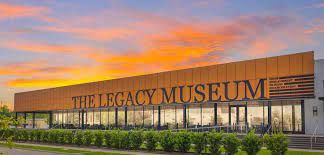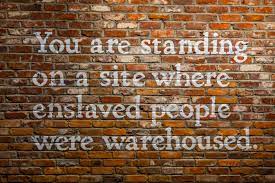"What Happened Here Changed the World"
- Judy and Mark
- Aug 25, 2022
- 4 min read
PHASE ONE of our trip brought us into the arms of people who've "changed OUR world," and that was warm and lovely. PHASE TWO has brought us into the souls of people who've "changed THE world," and that has been uncomfortable and confusing and humbling and necessary for us. Click on the Civil Rights Trail website: https://civilrightstrail.com/ and also take a look at the sampling below of some of the places you can visit along the way.


On the website, you'll see photo after photo captioned "What happened here changed the world" so you can get a sense of the SCALE of this journey. The site is so comprehensive that it includes a Spotify PLAYLIST of music you can enjoy as you travel along! Listening to it has actually broadened our understanding of the movement, shown us real connections to BLM, and...ummm...gave us better tunes to dance to than Country. https://open.spotify.com/playlist/4EWUHStfWehoQ4J2vRmOhc
Current Favorite: Gil Scott Heron's "The Revolution Will Not Be Televised" with lyrics:
HOW TO TAKE ON THIS JOURNEY
As we say on the Appalachian Trail, "Hike your own hike." Same for the Civil Rights Trail. The number of museums, historical markers, neighborhoods, roads, churches, businesses, cemeteries, parks, and monuments is too overwhelming to detail here. so here are our greatest impacts:
The Legacy Museum and Memorial in Montgomery, AL - Inspired by the Equal Justice Initiative (click here to learn about EJI), this massive museum provides visuals and facts that very clearly connect the widespread historical practice of Black lynchings to the mass incarceration of Black people today. FACT: The states that had the highest number of public Black lynchings just 100 years ago are currently the states that publicize the highest number of death penalty executions. The museum happens to be built on the former site of the Lehman, Durr & Co. cotton warehouse (reference if you saw The Lehman Trilogy on Broadway). The lynching memorial is, well, indescribable.
Edmund Pettus Bridge and Tent Cities, Selma AL - Traveling on Highway 80 from Montgomery, we encountered a memorial to one of the many tent cities where marchers camped along the route. It was here that we started to piece together the chronology of the marches from Selma to Montgomery, which each crossed the Edmund Pettus Bridge.

We learned that there were actually THREE marches in March, 1965: "Bloody Sunday," which was when SNCC chairman John Lewis suffered a fractured skull along with 60 fellow marchers on March 7. Two days later, on what became known as "Turnaround Tuesday," MLK and a larger crowd crossed the Edmund Pettus Bridge again and were met by armed police and troopers. The Reverend paused, led the crowd in prayer, and told everyone to turn around and go home (hence the name).
And finally the third march, where thousands of women, men, and children left Selma on March 21 and traveled on foot for 5 days to the Alabama state house to demand justice and voting rights. They stayed in tent cities along the way and were cheered by thousands as they traveled the 54-mile route.
"Because Alabama and because our nation have a date with history."
- Martin Luther King, Jr.
"At times history and fate meet at a single time in a single place to shape a turning point in man’s unending search for freedom. So it was at Lexington and Concord. So it was a century ago at Appomattox. So it was last week in Selma, Alabama."
- President Lyndon Baines Johnson
Five months later, Congress passed the 1965 Voting Rights Act.
National Civil Rights Museum at the Lorraine Motel, Memphis, TN - It's powerful enough to round a corner and find yourself facing the iconic motel sign, but when you look to the left of the balcony outside room 306, where Martin Luther King, Jr. was murdered, you see that the motel has been transformed into a state-of-the-art museum. Gallery after gallery provide firsthand accounts, photos, recordings, and statistics outlining the movement and its makers, until you suddenly find yourself staring into the actual motel room where MLK died. The architects of this museum are geniuses.
Final thoughts: Many of you know our dear friend Jeremy Minsberg, who gives incredibly honest and eye-opening tours of Berlin TheBerlinExpert.org (in fact, many of you reading this have had the privilege of touring Berlin with Jeremy!). When you see Berlin through Jeremy's eyes, you see a city that has acknowledged its culpability in the Holocaust and has rebuilt itself on a bedrock of self-reflection. This is how a nation heals. This is how a people heal. Same for post-apartheid South Africa with its Truth and Reconciliation Commission. Civil Rights museums and memorials have the power to show Americans, and foreigners who come to these museums to understand us, a history we are willing to own. Maybe that is a first step.
This was a long heavy post. NEXT ONE we blow through Arkansas and Oklahoma like a boll weevil in heat (I feel another Country song coming on...).




















Comments